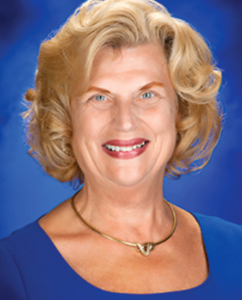
PDPM Article 1: The Impact of Patient Driven Payment Model on Your Business: What You Need to Know
November 10, 2020Get ready for the October implementation date of the Patient Driven Payment Model (PDPM) with our informative series of articles authored by Leah Klusch, RN, BSN, FACHCA, founder and director of The Alliance Training Center. We’ll prepare you for the new reimbursement model with detailed insights in a step-by-step guide to PDPM success. You’ll learn about everything from building staff competencies and improving your coding practices to the value of partners and how to enhance efficiencies. The series will conclude with a checklist to help you gauge your readiness.
The proposed new Medicare payment rule for skilled nursing facilities, called the Patient Driven Payment Model (PDPM), is the hottest topic in our industry right now. But despite the proliferation of information available, many organizations haven’t even begun to prepare or even fully comprehend the impact the new payment model will have on their business. Here are three ways things will change in your organization to help you understand where you need to invest in preparation.
REVENUE: The revenue risk with the PDPM is high. The data required by the PDPM is very intensive and it has to be right from the outset. Instead of therapy driving payment, the focus will now be on the complete patient, which represents a major change. Since no one area will have more input on payment than any other, communication will be key.
With many items in the new payment structure involving medication use or standards of treatment for conditions such as diabetes, pharmacy has to be able to capture that data. In that way, the system will bring in new opportunities for dialogue that haven’t existed in buildings before in order to drive revenue and a facility’s future growth.
OPERATIONS: Under the new system, diagnoses will need to be collected and documented as soon as possible, and the review of the MDS data is going to be very structured. That means there won’t be a lot of flexibility in the way an organization codes things: they’re either right or wrong and, if they’re wrong, CMS can reject the data set.
For quality and accuracy in the data, everyone in the building needs to come together, including pharmacy – even if it’s only electronically. This interaction is particularly important on complicated, complex cases where consultant pharmacists can help the clinical side understand the synergistic issues with some medications, new innovations in treatment in some areas, and more.
STAFF: In the past, the MDS manager in the building entered the data. Now, anyone who codes any data on the MDS – everyone on the interdisciplinary team – has to be trained to ensure competency. They should understand the specificity of the structure of the data as well as how important it is to get clear, rich data at the time of admission. That means, for example, that the physician, pharmacy, and nursing will need to communicate about the diagnostic coding related to patient medications since the admission assessment will only be supplemented in a very small number of cases.
Lastly, it is recommended that you document their training in their employment file to help with any future surveys. CMS has established a very short window for implementation – the shift will happen literally overnight. Preparation should already be well underway but, if it’s not, facilities need to begin by understanding the effect of the changes and how they should adapt their operations accordingly.


Leah Klusch, RN, BSN, FACHCA,
founder and director of The
Alliance Training Center
